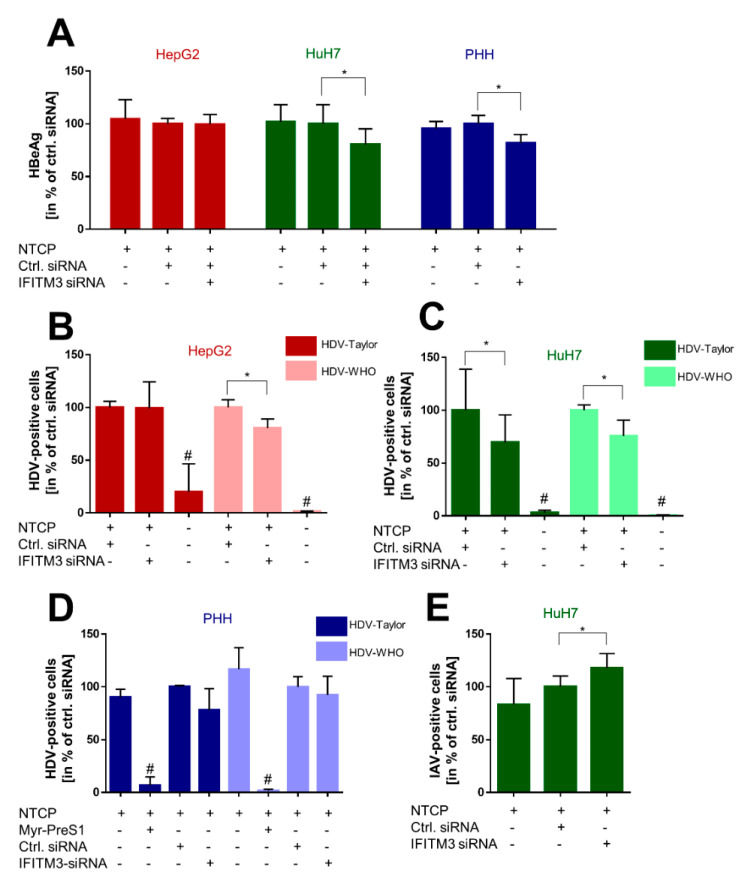Figure 4.
Effect of IFITM3 knockdown on the HBV/HDV receptor function of NTCP. PHH, HepG2, and HuH7 cells were seeded on 24-well plates, transfected with either control or IFITM3-siRNA, and incubated for 72 h (HepG2/HuH7) or 48 h (PHH). (A) Cells were inoculated with 5 × 109 HBV genomes/well overnight prior to medium changes every second day until collection of supernatants on day 10 post-infection and quantification of secreted HBeAg using the HBeAg Architect assay. Data represent means ± SD of combined data from three independent experiments each with triplicate or quadruplicate determinations. * Significantly lower after IFITM3 siRNA transfection compared to control siRNA with p < 0.05 according to two-way ANOVA with Sidak multiple comparisons test. (B–D) Cells were inoculated with 2–4 × 105 HDV IU/well overnight prior to medium changes every 2–3 days until fixation and immunostaining with human anti-HDV-positive serum on day 8 post-infection. Quantification of infected cells was performed using an automated imaging. Data represent means ± SD of combined data from three independent experiments each with triplicate determinations (B,C) or from two independent experiments with duplicate determinations (D). * Significantly lower after IFITM3 siRNA transfection compared to control siRNA with p < 0.05 according to two-way ANOVA with Sidak multiple comparisons test. # Significantly lower compared to all other conditions with p < 0.05 according to two-way ANOVA with Sidak multiple comparisons test. (E) Cells were inoculated with an MOI of 0.5 of IAV for 1 h prior to medium change. 24 h later, cells were fixated and immunostained against IAV-NP, and the number of virus-positive cells was quantified by an automated imaging. Data represent means ± SD of combined data of three independent experiments each with quadruplicate determinations. * Significantly higher after IFITM3 siRNA transfection compared to control siRNA with p < 0.05 according to one-way ANOVA with Tukey’s multiple comparisons test.

